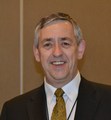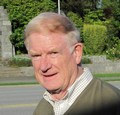2023 Annual Report for the Partnership for Water Sustainability in British Columbia

“Growing a network breaks all the rules of conventional thinking. It is the antithesis of building an organization that has staff. Instead, the network aligns individuals and organizations to deliver results across organizational boundaries. However, a network does require a nucleus or ‘engine’ for legal and organizational continuity. The Partnership for Water Sustainability serves that function for our local government partners within the Georgia Basin bioregion. Ensuring continuity of the network comes down to how organizations continue WITHIN the network,” stated Kim Stephens.
WHAT DO YOU WONDER / AT A GLANCE: “This page provides a snapshot of what the reader needs to know in order to have a sense of how the Partnership originated, who we are, and why we do what do in developing tools and resources, delivering programs and facilitating peer-based education under the umbrella of the Water Sustainability Action Plan,” states Ray Fung, Founding Member and Director and a former Chair of the predecessor BC Water Sustainability Committee

“Nested within ‘Living Water Smart, BC’s Water Plan’, the main goal of the Water Sustainability Action Plan is to encourage province-wide implementation of fully integrated water sustainability policies, plans and programs. The Action Plan recognizes that the greatest impact on water, land and water resources occurs through our individual values, choices and behaviour. The Action Plan promotes and facilitates sustainable approaches to water use, land use and water resource management at all levels – from the province to the household; and in all sectors,” states Ray Fung.
STRUCTURE AND GOVERNANCE OF THE PARTNERSHIP: “Directors are the only formal ‘members’ and are the only ones to have voting rights,” stated Ted van der Gulik, President and Board Chair, Partnership for Water Sustainability in British Columbia

“In November 2016, the new Societies Act came into effect in British Columbia. It provided clarity regarding types of societies. This clarity helped the Partnership define its identity as the hub for a convening for action network. The Partnership is not, and cannot be, a member-funded society. The reason is that The Partnership is funded mostly by government and provides services to government. The Directors are empowered to create non-voting categories of membership and to date have created four categories,” stated Ted van der Gulik.
COLLABORATIVE LEADERSHIP: “The Partnership’s Board of Directors is a team of community-minded and mission-focused elders. These individuals bring Experience, Knowledge and Wisdom to the Partnership’s over-arching goal of inter-generational collaboration,” says Derek Richmond, Founding Member and Secretary

“Although the Partnership is a non-for-profit legal entity, the Board of Directors is guided by a vision for creating a collaborative network. We are not building a conventional organization. The difference in visions is fundamental. The network is a foundation piece for succession planning. The network is the ultimate source of strength of the Partnership because the network holds the key to intergenerational collaboration. It is how we build bridges of understanding and pass the baton from the past to the present and future,” states Derek Richmond.
PUT THE MISSION AT THE CENTRE OF THE OPERATION: “The Partnership’s guiding philosophy is to help others be successful in achieving a shared goal. When our partners and collaborators are successful, we are successful,” stated Mike Tanner, Founding Director of the Partnership for Water Sustainability, when he explained the foundational difference between evolving a network and building an organization

“Within British Columbia, and certainly within the local government setting, The Partnership has a unique modus operandi in terms of our partnership network reason for being. By sharing the pursuit of our mission with our network of partners, we forsake many conventional organizational benefits, such as control over program implementation, funding, and recognition. At the same time, however, we have far more impact than we could ever have on our own. There is a very high level of trust in a network when the people involved know and respect each other,” stated Mike Tanner.
INTER-GENERATIONAL MISSION OF THE PARTNERSHIP: “Collaborative leadership involves bringing the right people together in constructive ways with good information, such that they create authentic visions and strategies for addressing the shared concerns of their organizations and community,” explains Kim Stephens, Executive Director

“The Partnership’s guiding philosophy is to help others be successful. When our partners and collaborators are successful, we are successful. The Partnership is led by a team of community-minded and mission-focused elders. Although many on the team are retired from their jobs, they continue their water-centric mission as volunteers. Going forward, making the right decisions depends upon benefitting from, and building on, the experience of elders with knowledge plus the wisdom that has been gained through decades of experience,” states Kim Stephens.
OPERATIONAL FRAMEWORK FOR PARTNERSHIP LEADERSHIP TEAM: “When individuals are invited to join the Partnership Leadership Team, it is because there is ‘a job to be done’. The Province’s Living Water Smart strategy guides what we do. The Partnership’s expectation is that individuals and organizations they represent are committed to advancing the sustainability goals in the Water Sustainability Act (WSA) and its implementation,” states Mike Tanner, Founding Director

Erik Karlsen (1945-2020) was the Partnership’s ‘eminence grise’. When he retired from government, he turned his mind to the work of The Partnership. Influential in government, and the architect of BC’s Georgia Basin Initiative, Erik crafted the think pieces that guided the process for development of the Water Sustainability Action Plan. Erik helped everyone push the boundaries of their comfort zones. The result was a philosophical foundation and framework that has guided The Partnership to this day.
PARTNERSHIP HUB FOR A CONVENING FOR ACTION NETWORK: “Launched in 2012, the Georgia Basin Inter-Regional Education Initiative facilitates peer-based education among local governments located on the east coast of Vancouver and in the Lower Mainland,” states Richard Boase, Founding Director and Partnership Vice-President

“The IREI is nested within the Water Sustainability Action Plan which, in turn, is nested within Living Water Smart. Cascading is the reverse way to think about this nesting concept. Each successive layer in the cascade adds depth and detail to enable the move from awareness to implementation – that is, action. In the IREI program, we focus attention on the 4Cs – communication, cooperation, coordination, collaboration. The 4Cs guide what we do. We live and breathe collaboration. This plays out in everything that the Partnership does. Building trust and respect starts with a conversation,” states Richard Boase.
A SHORT HISTORY OF THE PARTNERSHIP FOR WATER SUSTAINABILITY IN BRITISH COLUMBIA: Titled “Celebration of Our Story: Genesis / First Decade / What Next,” this legacy document was published in conjunction with the 10th anniversary of Partnership incorporation (November 19, 2020)

“The Partnership is the evolution of many initiatives around water sustainability in BC. The Partnership does its work under the umbrella of the Water Sustainability Action Plan. This has led to growing collaboration regarding the role of water sustainability in shaping our communities. Water sustainability is a metaphor for managing the built environment sustainably. Incorporating the Partnership as a legal entity is a natural outcome. This demonstrated record of collaboration is our strength going forward,” stated Tim Pringle.
ASSOCIATE MEMBER EXPLAINED: “Anyone with an interest in the activities of the Partnership can register as an Associate Member to receive the Waterbucket eNews newsletter. However, there is no voting privilege associated with this category,” states Peter Law, Associate Members Chair

“The Directors concluded that it would be in the best long-term interests of the Partnership to make membership simple to administrate. Any individual with an interest in green infrastructure and/or water sustainability can become an associate member of the Partnership. All that individuals need do is go to ‘waterbucket.ca’ and follow the instructions to receive the Partnership’s weekly e-Newsletters,” states Peter Law. “Members who are registered in the non-voting Associate category have our permission to make use of information resources and guidance documents published by the Partnership.”
PARTNERSHIP CELEBRATES 10-YR ANNIVERSARY: “We live and breathe collaboration. This plays out in everything that the Partnership does. Building trust and respect starts with a conversation. Listen, listen, listen. Conversations lead to dialogue. In turn, dialogue leads to consensus,” wrote Kim Stephens, Executive Director (November 2020)

“Our partnerships & collaboration journey actually commenced some two decades before incorporation of the Partnership as a legal entity in November 2010. A group of like-minded and passionate individuals, including representatives of three levels of government, came together as a committee and created a ‘water roundtable’ that evolved over time into The Partnership. And what was the mission of this water roundtable? Champion a water-centric approach to use and conservation of land. Develop tools, resources and programs to support water-centric planning,” stated Kim Stephens.
“Now that the new Societies Act (2016) has provided the Partnership with clarity regarding our identify, it allows the Board of Directors to focus on the Partnership mission,” stated Derek Richmond, Partnership Secretary

“The Partnership’s Constitution is now aligned with the new Societies Act. 2018 was our first full year operating under the new act,” stated Derek Richmond. “Changes in municipal staffing and recent municipal elections have enabled us to renew and strengthen old relationships and also develop new relationships. This re-enforces the importance of collaboration between all parties and the opportunity to review and embrace the foundation of our past success through collaboration, cooperation and coordination.”
RESILIENCE + CHANGE: Session on “Tools, Resources & Funding for Local Governments” at UBCM Annual Convention updated British Columbia local government elected representatives about the ‘convening for action’ leadership role played by Partnership for Water Sustainability (Sept 2019)

Big or small, rural or urban, our communities are experiencing change at an unprecedented rate. From climate change to economic pressures, local governments are on the front lines managing the local impact of complex issues. In an uncertain future, local leaders have a duty to learn from each other and from the past and to find new approaches to plan and thrive. “One-on-one conversations with mayors and councillors from towns around BC was an effective way to inform them about the Partnership’s work,” stated Richard Boase.
INFLUENCING CHANGE IN BRITISH COLUMBIA: “In effect we are being challenged to re-assess our thinking regarding how we practice water management in the 21st century,” stated Eric Bonham when commenting on the legacy of the Partnership for Water Sustainability in “Our Story”, released in March 2018

“Future planners, engineers, scientists, politicians and citizens alike will be called upon to demonstrate both vision and pragmatism, working as a team towards consensus, commitment and collaboration for the common good. Such collaboration is essential and must cross all political and community boundaries given that climate change is no respecter of such creations. The Partnership has accepted this challenge and its implementation,” stated Eric Bonham.
CONTEXT AND HISTORY DO MATTER: “In 2003, we embarked on a journey with a commitment to document our history on waterbucket.ca even as we created it through collaboration and partnerships,” stated Kim Stephens, Executive Director

“The Partnership for Water Sustainability in its present form was birthed in 2003. We seized the moment and moved into a vacuum. Timing is everything. At our first inter-regional focus group session, held in Kelowna in November 2003, the vision and game plan for the waterbucket.ca website had crystalized. The Partnership embraced the model for storytelling that Joanne deVries pioneered with her FreshOutlook magazine in the 1990s. The rest is history, as they say. And why is this context important? Through storytelling, we pass on an understanding of THE WHY and THE WHAT,” stated Kim Stephens.
2022 Annual Report for the Partnership for Water Sustainability in British Columbia

“A Partnership strength is the real-world experience we bring because of our multiple initiatives under Living Water Smart Actions. Under that vision, various building blocks processes have evolved over the decades. The Watershed Security Strategy and Fund, an initiative of the current provincial government, is the obvious mechanism to revisit, understand, learn from, and leverage past successes in the building blocks continuum. We have tools to help do the job. We can achieve better stewardship of BC’s water resources for present and future generations,” stated Ted van der Gulik.
About the Lifetime Category of Membership in the Partnership

“The Lifetime Members category recognizes the contributions of key individuals who have played a pivotal role in the genesis and/or evolution of the Partnership. The Directors created the Lifetime Membership category to achieve two outcomes. First, we believe this is a material way to recognize the valued contributions of those who have been involved in developing and/or delivering program elements. Secondly, this provides those key individuals with formal standing in their retirement so that they can continue to identify with the Partnership,” stated Tim Pringle.
About the Champion Supporter Category of Membership

“The Champion Supporters category of membership in the Partnership is our way of formally recognizing agencies and organizations that provide the Partnership with substantial financial and/or in-kind support. Their support is vitally important because that is what enables the Partnership to develop tools and deliver programs under the umbrella of Convening for Action in British Columbia. Their demonstrated commitment to achieving a shared vision for water sustainability allows the Partnership to carry out our mission,” states Kim Stephens,
Lifetime Member – Brian Carruthers (inducted in 2022)

“I had a real incentive to come to the Cowichan Valley Regional District in 2014 because water was the primary focus. The region was in the midst of a watershed governance study. It was looking at how the CVRD could take a more active role in watershed governance. The Board Chair and I did tours of First Nations communities and met with their chiefs and councils around the intent of this initiative and what would their interest be. We realized that this was bigger than we could take on at that time. Instead, we turned our attention to the Drinking Water & Watershed Protection (DWWP) model for a regional service,” stated Brian Carruthers.
CHAMPION SUPPORTER: recognition of the City of Kelowna (May 2022)

“On behalf of Council, thank you to the Partnership for the Champion Supporter recognition honouring the great work done by City of Kelowna staff in supporting you! I am blessed with the best municipal staff in the country and this is another example of that,” stated Mayor Colin Basran. Most recently, the City of Kelowna stepped up to be in the first cohort of local government partners to operationalize the BC Landscape Water Calculator in three regions (Okanagan, Fraser Valley and Vancouver Island).
2021 Annual Report for the Partnership for Water Sustainability in British Columbia

“Looking back, 2021 is an extraordinary year of accomplishment for the Partnership. We continued to elevate our game and in so doing demonstrated what is possible. We provided leadership for a range of initiatives of provincial importance. Successes were achieved through the power of collaborative leadership. The process involves bringing the right people together in constructive ways with good information, such that they create authentic visions and strategies for addressing the shared concerns of their organizations and communities,” stated Ted van der Gulik.
CHAMPION SUPPORTER: recognition of the City of Abbotsford (October 2021)

The City of Abbotsford was a founding member of the original inter-governmental Water Balance Model Partnership that morphed into the Partnership, a legal entity. Beginning in 2002, a succession of City staff has supported and/or contributed to the work of the Partnership. Most recently, the City of Abbotsford stepped up to be in the first cohort of local government partners to operationalize the BC Landscape Water Calculator in three regions. “The City is honoured that the Partnership for Water Sustainability has awarded the City Champion Supporter recognition. This reflects well on City staff who are doing good work,” stated Mayor Henry Braun.
CHAMPION SUPPORTER: recognition of eVision Media for design and enhancement of waterbucket.ca website to showcase success stories and celebrate champions who lead by example (October 2021)

The Partnership for Water Sustainability values everything that Susan Friesen and her staff have done for the past decade to help us ensure the success of the waterbucket.ca website. “Knowing the waterbucket.ca user-base was wanting to find information easily, we redesigned the home page with not only a more contemporary look and feel but also to facilitate it being a portal to all of the different content-rich sections of the site. Now site users can enjoy a faster, easier and mobile-friendly experience,” stated Susan Friesen.

